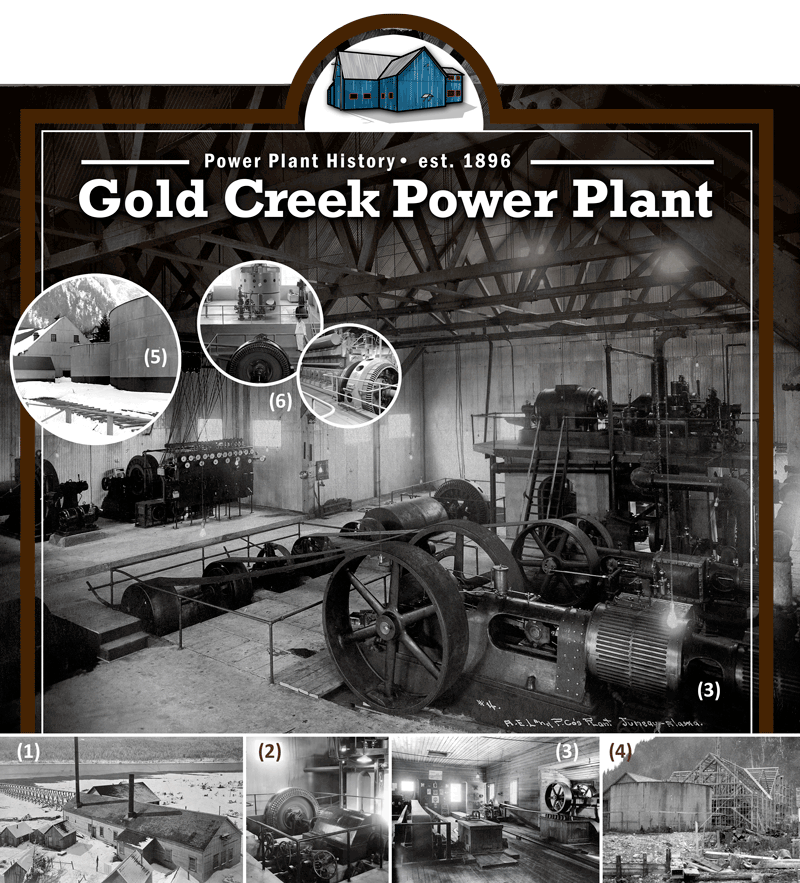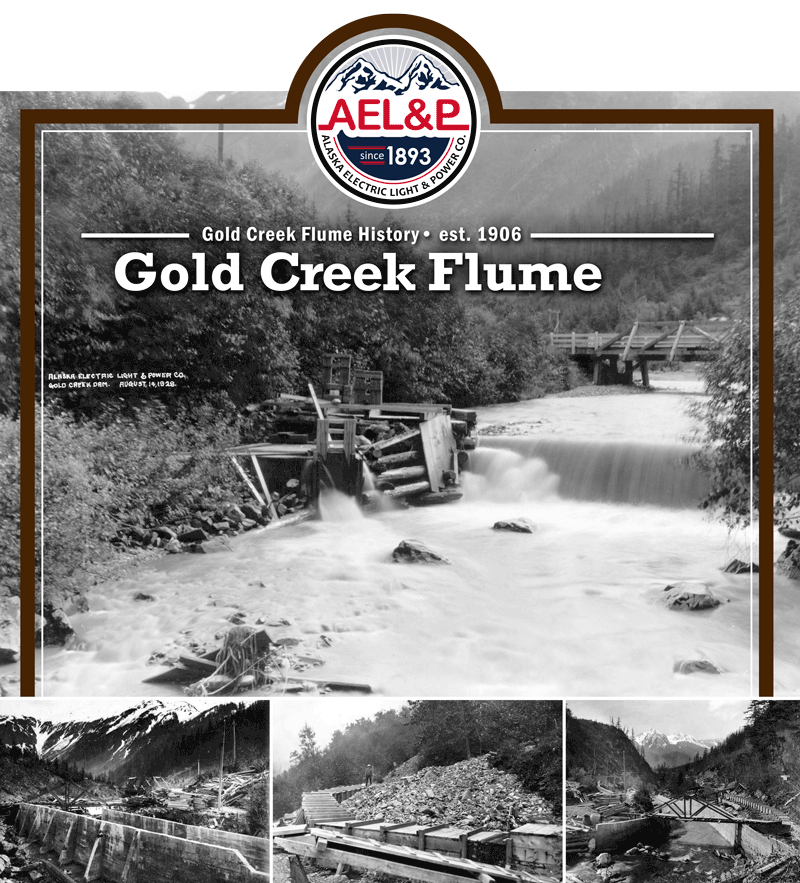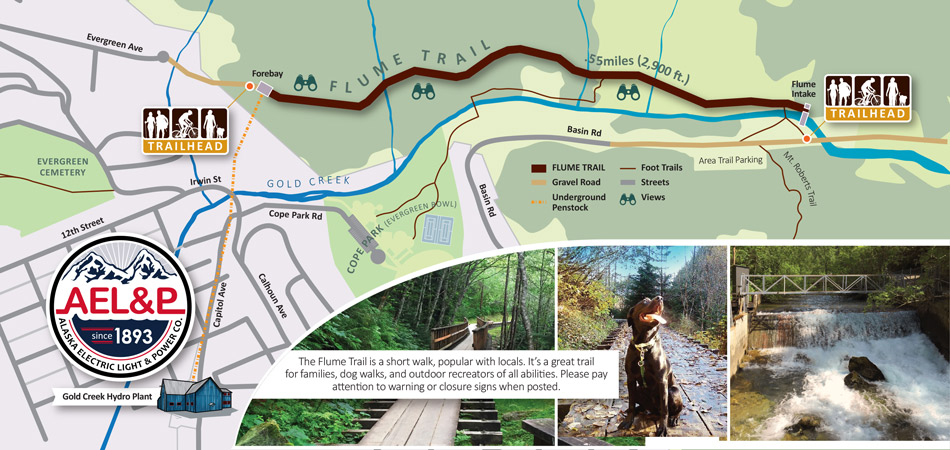
Gold Creek Power Plant
History of the Gold Creek Power Plant • est. 1896
In 1893 Willis Thorp built a hydroelectric plant on Gold Creek and formed AEL&P Co. A few years later in 1896, four men associated with Treadwell bought AEL&P Co. from him and decided to build a new larger Gold Creek Plant (1) on this site, where the plant still stands. Over the years the plant has been through many changes, but the two original Pelton wheel turbine generators (2) dating from 1906 continue to provide power to Juneau to this day.
The Pelton wheel units are part of a run-of-the-river system that uses water from Gold Creek. Being a run-of-the-river plant, energy production peaks May through November, with little energy available in the winter months when there is usually insufficient water in Gold Creek to drive those units. To provide power year-round, steam driven generators (3) were added to the plant early on to complement the hydro driven generators.
In 1914, the plant was expanded (4), adding a larger boiler and an additional steam driven generator. A large 15,000 barrel fuel tank (5) was constructed to store the fuel necessary to power the boilers. An aerial transmission line was built across Gastineau Channel to provide additional capacity to Douglas City. This replaced the 4,000 foot cable that had been laid across the channel in 1897.
As technology changed, diesel generators replaced the steam driven units. The first to be installed were two Fairbanks Morse units reclaimed from World War II landing craft. During the mid-1950’s an additional Pelton wheel turbine generator and a larger diesel generator were added (6) to meet the demand for power as Juneau grew. Up until 1973, when the Snettisham Plant came online, the Gold Creek Plant was the main source of power for the Juneau power grid.
About half a mile up Basin Road there is a headgate facility that diverts water from Gold Creek into the wooden flume that runs along the hillside to a facility called a forebay. The forebay contains a raking system to remove debris from the water before it flows into a steel penstock. The penstock runs down the hill, over the creek and under Capital Avenue to the Gold Creek Plant, where it splits to feed the three Pelton wheel turbine generators inside.
After the water leaves the turbines, it flows out the tailrace using a wooden flume (5) next to the Salvation Army building. It then passes under Willoughby Ave, between Foodland and the Father Andrew P. Kashevaroff building, under Egan Drive, and outflows into the channel.

Gold Creek Flume
History of the Gold Creek Flume • est. 1906
Mining in the early nineteenth century was back-breaking labor using picks, shovels, pans, and other hand tools. As technology improved in the late 1800’s, the miners moved from manual tools to more mechanized means and processes which reduced the physical demands and increased production. To supply the power required to run those machines, the local miners took advantage of Juneau’s abundant water resources.
The Gold Creek Plant and Flume are great examples of the Juneau miners’ ingenuity and ability to mold the land to meet their needs. Hydro turbines were developed during the Industrial Revolution to supply factories with power, and the miners saw a perfect fit for them in Juneau. To provide enough water pressure to run the Pelton wheel turbines in the Gold Creek Plant, they tapped Gold Creek high up on the hillside and diverted the water down to the plant.
About half a mile up Basin Road there is a headgate facility that diverts water from the creek into the wooden flume that runs along the hillside to a facility called a forebay. The forebay contains a raking system to remove debris from the water before it flows into a steel penstock. The penstock runs down the hill, over the creek and under Capital Avenue to the Gold Creek Plant, where it splits to feed the three hydro driven generators inside.
The Flume has been, and continues to be, a popular walking trail for local Juneauites as well as the many visitors we receive each year. Other water diversions in the area such as the Treadwell Ditch, Nugget Creek penstock, and Salmon Creek Dam have also become popular hiking trails providing glimpses into Juneau’s extensive mining history.
AEL&P began renovations to the Gold Creek Flume Trail in spring on 2019. After a two-year effort, renovations were completed and the trail was reopened to the public in November of 2020.
